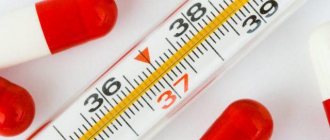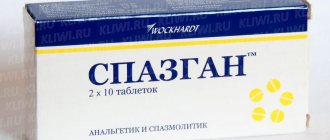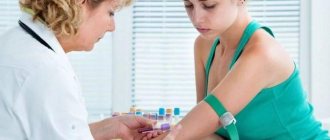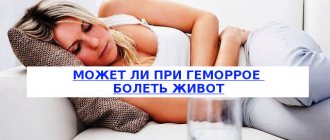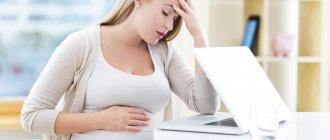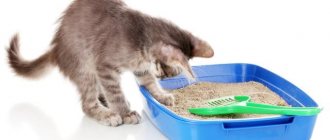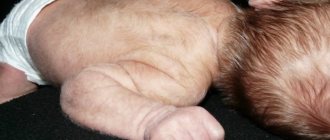General information
Antipyretics (antipyretics) from the NSAIDs (non-steroidal anti-inflammatory drugs) group are the most commonly purchased and used medications, both for the treatment of adult patients and for the treatment of children.
This circumstance is facilitated by the often erroneous perception of many people about the dangers of high temperature, as well as the availability in pharmacies of drugs from this group, sold without a prescription. It must be remembered that the basis of the action of NSAIDs, in addition to antipyretics, also includes anti-inflammatory and analgesic effects in varying degrees of activity, and therefore the choice of analgesic and anti-inflammatory drugs for children from this group specifically to reduce elevated temperature should be carefully and carefully. For example, children under 12 years of age should not be prescribed medications that include the active ingredient Nimesulide ( Nimulid , Nimesil , Nemulex , Nimid ), as well as combination medications with two or more active ingredients ( Brustan , Ibuklin , Dolaren ).
It is worth noting that frequent and uncontrolled use of certain medications for temperature ( fever ) in itself can cause the development of various complications (sometimes severe), and their overdose increases the risk of negative side effects several times. In this regard, adults, especially parents of infants and children of a younger age group, need to thoroughly study antipyretic drugs for children, figure out how often antipyretics can be given to a child, which active ingredient is best to take at a particular age and at what temperature to give an antipyretic to a child.
It would also be a good idea to establish the best and safest medicine, included in the list of antipyretic drugs ( Paracetamol , Acetylsalicylic acid , Ibuprofen , Metamizole , etc.), specifically for your child. Decide on its dosage form (tablets, injections, powders, suspension, suppositories, etc.), dosage (in mg or ml), and also select analogues identical in composition.
The criteria for choosing a drug against fever should be based, first of all, on its relative safety (no contraindications, allergies , minimal side effects) and good effectiveness (strong, fast and long-lasting effect that brings down the temperature and reduces other symptoms of fever), and only after its popularity and price.
What to give your child to drink if he has a fever
When the temperature rises, it is good to give the baby healthy drinks that cause sweating. You can prepare diaphoretic drinks at home:
- Linden blossom tea. A spoonful of dried flowers in a glass of boiling water plus honey to taste. If your child cannot tolerate honey, you can stir in sugar. Let the tea cool naturally. The child can drink it when it becomes warm.
- Elderberry and mint. Brew also, in half an hour the drink will be ready for use.
- Dried fruit compote is an excellent way to improve your baby's health.
- The famous tea with raspberry jam, in addition to it, raspberry compote, or an infusion of fresh raspberries.
- Two tablespoons of raisins should be infused with half a glass of boiling water. When it cools down a little, add a little lemon juice.
- Freshly squeezed juices of berries and fruits are also suitable for this period.
- Berry juice is suitable. Homemade is best. Store-bought foods do not provide much health benefit.
Attention! Any herbal teas and juices can be used for a three-year-old child if you are sure that he is not allergic to them.
A sufficient amount of fluid for a feverish child is a prerequisite for recovery. Your baby needs to drink a lot - offer your child water and antipyretic drinks often, literally every five minutes, several sips.
Indications for the use of antipyretic drugs in children
It should be remembered that the increase in temperature that accompanies many diseases is, first of all, a protective mechanism of the human body aimed at stimulating its immune system (in particular the production of interferon ) and combating pathogenic microorganisms. For this reason, it is not advisable to give a child antipyretics to lower body temperature immediately when an increase in temperature (37-38 ° C) is detected. It is necessary to give the child’s body a chance to independently cope with the illness that attacks it, especially since this does not threaten it with any serious negative consequences.
Some studies have definitely proven that the administration of antipyretic medications does not reduce the total duration of fever in children suffering from acute respiratory viral infections and does not significantly affect the course of other childhood infections or painful conditions, the symptom of which may be an increase in temperature (for example, temperature in a 10-month-old child during teething teeth ).
Although high temperature is accompanied by acceleration of metabolic processes and accelerated loss of fluid by the body, its danger is often greatly exaggerated. Most infections in children resolve with a maximum increase in body temperature to 39-40 °C, which is recognized as harmless to the child’s health. That is why WHO (World Health Organization) does not recommend giving antipyretic drugs to children without any concomitant pathologies if the medical thermometer reading is 39-39.5 °C.
Upper limits of normal body temperature of a child depending on age
| Child's age | Temperature value |
| newborns | 36,8 |
| 6 months | 37,7 |
| 1 year | 37,7 |
| 3 years | 37,7 |
| 6 years | 37,0 |
According to the same WHO recommendations, lowering the temperature can and should be done in the following cases:
- if the temperature of a child under 3 months is 38 °C;
- if the child’s temperature from 6 months is 38.5 °C and is accompanied by severe headache and aches in the joints and muscles;
- if the child’s temperature from 6 months is 38-38.5 °C, with concomitant chronic heart pathologies , neurological diseases, a history of febrile convulsions
Types of fever in children
Depending on the observed state of hyperthermia, modern medicine divides baby fever into two types - pale and pink .
Pale fever
This type of fever is characterized by a clearly visible development of pallor of the skin, especially noticeable on the skin of the face, significant chills and coldness of the extremities. With increased heat production, inadequate heat transfer is observed due to impaired peripheral circulation . If such symptoms are detected, the further prognosis for the course of the febrile process is unfavorable, which requires a mandatory decrease in temperature. In this case, most often, a sick child needs the parallel use of antipyretics, vasodilators and antihistamines , as well as warmth (the child must be warmly dressed or wrapped in a blanket).
Pink fever
In this condition, heat production corresponds to heat transfer, the child’s body adequately responds to a rise in temperature, and the child’s condition is relatively normal. The skin is slightly hyperemic or takes on a pink tint, the skin itself is moist and warm to the touch. In this case, taking antipyretic medications is only necessary when the temperature rises above 39 °C. Otherwise, auxiliary cooling methods should be used: reduce the room temperature to 19 ° C, provide the child with plenty of fluids, wipe him with a damp towel soaked in water at room temperature, etc.
Commonly accepted therapeutic measures
Common adjuvant therapeutic measures for infantile fever include:
- ensuring bed rest (if the child’s temperature is above 38-38.5 °C, accompanied by poor general health);
- drinking plenty of fluids to increase sweating in order to increase heat transfer (rosehip decoction, sweetened tea, compote);
- providing food depending on appetite (preference is given to carbohydrate-containing foods);
- regular monitoring of bowel movements (use of cleansing enemas );
- the child’s intake of Ascorbic acid (with the possibility of increasing the age norm by 1.5–2 times).
Recommendations for the use of antipyretic drugs in children
When patients in the pediatric age group use any antipyretic drugs, including the safest, which today is considered to be Paracetamol , parents should strictly adhere to certain rules.
Under no circumstances should you give your child medications to reduce fever without consulting a doctor, especially children under 3 months.
Strictly follow the official instructions for use for the selected drug, do not exceed the frequency of administration of the medication and its dosage, and also follow all additional instructions of the pediatrician.
Do not use antipyretics as painkillers for a long time.
Do not resort to taking antipyretic drugs for regular course therapy (for example, 2-4 times a day, regardless of the readings of a medical thermometer). This treatment tactic significantly affects the temperature curve and can smooth out the symptoms of the disease and create the appearance of false well-being, which can lead to delayed diagnosis of pneumonia or other bacterial infections , the main manifestation of which is often constant fever. A repeated dose of an antipyretic drug can be taken only after the next rise in temperature to the above level. When using this regimen, most patients are limited to taking 2 doses per day, which significantly reduces the risk of a possible overdose.
Do not use antipyretics in parallel with antibiotics , since if the agent of the infectious process is sensitive to the antibacterial drug, the temperature will normalize on its own after 1-2 days, and antipyretics may make it difficult to assess the effectiveness of antibiotics .
During fever therapy, if malignant hyperthermia , occurring with impaired microcirculation and spasm of skin vessels, additional therapeutic measures should be practiced (infusions of antiplatelet agents , rubbing the skin, compresses, etc.), and also urgently consult with your doctor.
At the entire stage of treatment, parents should give the child plenty of fluids (the drink should be warm or hot), ventilate the room in which the patient is staying, monitor its humidity, temperature and cleanliness.
In case of fever, without other signs of a cold, which is accompanied by pain in the abdominal area, you must immediately call an ambulance service. In this case, the child does not need to be given any antipyretic drugs, so as not to disturb the clinical picture of diseases that are potentially life-threatening and require emergency care (for example, inflammation of the appendix ).
When to see a doctor
Any illness, including colds or flu, should be treated under the supervision of a specialist. An emergency call to your home by a doctor is necessary in the following cases:
- hyperthermia is accompanied by vomiting, diarrhea, and the appearance of a skin rash;
- the child completely refuses to drink;
- convulsions and fogginess appear;
- the temperature stays for more than three days not below 38 ° C;
- there are chronic diseases of the heart, kidneys and other organs.
1
In accordance with the instructions for use, the contents of 1 sachet (bag) must be poured with hot water and stirred until completely dissolved, resulting in a “hot drink”
Antipyretic for newborns
Particular caution must be exercised when prescribing any pediatric medications for newborns up to one month, whose weight is often so small that it does not allow the use of a standard dosage form, and the undeveloped body systems are not able to fully remove excess substances.
Naturally, if the temperature readings of a medical thermometer are within the range of 37-38 °C, it is better to do without the use of any medications, however, with higher values of the thermometer, sometimes temperature medications for infants are simply necessary. In this case, a pediatrician, without whose consultation it is strictly prohibited to use antipyretics for infants, may advise using temperature-sensitive suppositories for newborns in the very minimum dosage or diluting a small amount of suspension/syrup in a drinking bottle.
For infants, antipyretic suppositories and other dosage forms can be prescribed only from the second month of life and under constant supervision by adults.
Dosage forms of antipyretics for children
Parents who give their child antipyretic drugs for children should remember that such therapy is purely symptomatic, aimed at alleviating one of the painful manifestations of the underlying disease, on the cause of which the definitive treatment should be concentrated.
At high temperatures in children, antipyretic drugs in any dosage form should be prescribed in dosages calculated primarily in accordance with the child’s body weight, and then with his age (you need to pay attention to the age restrictions prescribed in the official instructions). So, for example, recommended remedies for fever in a 2-year-old child may be contraindicated for children 5-6 months old. Also, the choice of a pediatric antipyretic should be based on the ease of use, speed of action, individual patient sensitivity to the active ingredient of the drug, concomitant diseases and cost.
Today, the list of antipyretic drugs in various dosage forms intended for patients of any age category is quite wide (tablets, suppositories, capsules, syrups, powders, suspensions, etc.). Their composition is specially selected for children, and the release form is designed for ease of use in accordance with the child’s age and functionality.
Antipyretic suppositories for children
At this time, suppositories for high fevers for children under one year of age and older are recognized as the safest medicinal antipyretic drugs. The rectal method of administering the suppository for children under 1 year of age virtually eliminates side effects such as nausea / vomiting , which sometimes occur when taking tablets, sweet suspensions, syrups and other oral dosage forms, and therefore the therapy is more easily tolerated by the youngest patients. The onset of action of the suppositories is observed after approximately 40 minutes and lasts for approximately 4-6 hours.
Efferalgan candles
It is better to administer rectal dosage forms after first emptying the patient’s intestines. Some baby suppositories for fever can be recommended for a child already from one month of his life ( Efferalgan ), if he gains weight over 4 kilograms, but only in minimal dosages and under the supervision of a pediatrician.
Basically, they practice the use of antipyretic suppositories for children from 1 year, starting from 3 months ( Nurofen , Panadol , Cefekon D ) in doses corresponding to body weight. For children aged 1-2 years, whose parents are wary of medications created on the basis of chemical ingredients, therapy can be offered using homeopathic suppositories Viburkol , also quite often prescribed by pediatricians to reduce fever.
Rectal suppositories containing paracetamol are represented by the following drugs:
- Efferalgan (80 mg, 150 mg, 300 mg);
Candles Tsefekon D - Panadol Baby (125 mg, 250 mg);
- Cefekon D (50 mg, 100 mg, 250 mg).
Efferalgan suppositories in a minimum dosage can be prescribed from 1 month, suppositories from other manufacturers from 3 months of life. The maximum daily dosage for all suppositories in this group is calculated based on the ratio of 60 mg of paracetamol per 1 kg of child weight. In 24 hours, you can use no more than 4 suppositories (every 6 hours) appropriate for your age and body weight. It is better to limit the duration of antipyretic therapy to three days.
ibuprofen as an active ingredient are represented by the following drugs:
- Nurofen (60 mg);
Nurofen suppositories for children - Ibuflex (60 mg);
- Ibuprofen for children (60 mg).
All drugs in this group can only be used from 3 months of age. The maximum daily dosage for all these suppositories is calculated based on the ratio of 30 mg of ibuprofen per 1 kg of child weight. In 24 hours, you can use no more than 3 suppositories (every 6-8 hours) appropriate for your age and body weight. It is better to limit the duration of antipyretic therapy to three days.
Homeopathic rectal suppositories Viburkol include components of various origins: conhe, plantago, chamomilla, dulcamara belladonna, pulsatilla in homeopathic dilution.
These suppositories are indicated for use in combination therapy of childhood respiratory diseases and have anti-inflammatory and antipyretic effectiveness. Viburkol can be used starting from 6 months of life. To reduce fever, children over 6 months old with medical thermometer readings above 37.5 °C are prescribed 1 suppository 4 times every 24 hours; at temperatures above 38 °C - administration of 1 suppository 6 times a day. After normalization of the temperature, treatment should be continued for another 3-4 days with the introduction of 1 suppository 1-2 times a day.
Suspensions and syrups for temperature control for children
Antipyretic suppositories for children over 3 years of age are used less frequently, giving preference to liquid dosage forms, probably due to their faster action and taste.
Various antipyretic syrups, powders in granules in bags for the preparation of oral solutions and ready-made suspensions mainly contain various flavoring additives and sugar. It is these “sweet” ingredients that help children swallow the medicine, but can also cause nausea or even vomiting, which will weaken or completely eliminate the effectiveness of the drug taken.
A large amount of sugar in some cases ( diabetes mellitus or any intolerance to sugars ) may be contraindicated for a child and therefore parents are required to carefully monitor how much of it a particular medicine includes.
The onset of action of liquid medicinal preparations, as a rule, is noted after 20-30 minutes and lasts for 4-6 hours. Some medications can be diluted with water, tea, milk, others are intended for internal use in their pure form.
Efferalgan syrup
Starting from the second month of life, according to the instructions (under constant monitoring and with caution), the child can be given the same Efferalgan , while the age limit for other similar drugs is most often 3 months ( Calpol , Nurofen , Ibufen ), and sometimes 6 months. Dosages of liquid medicines are also calculated based on the patient’s weight, and to accurately measure them, a measuring container (spoon, cup or syringe) is always included in the secondary packaging.
Liquid medicines based on paracetamol :
- Efferalgan syrup (30 mg/ml, 90 ml or 150 ml in a bottle);
- Panadol Baby suspension (120 mg/5 ml, 100 ml or 300 ml in a bottle);
- Calpol suspension (120 mg/5 ml, 70 ml or 100 ml in a bottle);
- Paracetamol for children syrup/suspension (120 mg/5 ml, 50 ml or 100 ml in a bottle).
In this group, from one month of life, children can take Efferalgan Paracetamol suspension , other drugs are indicated for use only from 3 months.
The average single dose of liquid paracetamol, depending on the weight of the child, varies between 10-15 mg/kg in 3-4 doses per day. A child can drink a suspension or syrup at a dose of 60 mg/kg within a maximum of 24 hours. The interval between oral administration of any drug should be 4-6 hours. For accuracy and convenience of dosing, you should use the measuring container included with the selected drug. It is better to limit the duration of antipyretic therapy to three days.
Ibufen syrup
Liquid preparations containing the active ingredient ibuprofen :
- Nurofen (100 mg/5 ml, 100 ml or 200 ml in a bottle);
- Bofen (100 mg/5 ml, 100 ml in a bottle);
- Ibufen (100 mg/5 ml, 100 ml in a bottle).
All these drugs can be used to treat children over 3 months of age. A single dose of liquid ibuprofen, depending on the child’s weight, ranges from 5-10 mg/kg in 3-4 doses per day. The maximum dose a child can take per day is 30 mg/kg.
The interval between oral administration of these medications should be 6-8 hours. Convenience and accuracy of dosing is provided by the measuring container included in the kit for the selected drug. It is better to limit the duration of antipyretic therapy to three days.
Antipyretic tablets, capsules
Capsules and tablets for fever for children (including effervescent forms) are mainly indicated for use from 6 years of age. This age limit is associated with a rather impressive dose of the active ingredient contained in the solid dosage form and the inability to accurately measure the dosage by dividing the capsule or tablet into parts.
These dosage forms, like their liquid counterparts, can also include many different additional substances, which will certainly affect which fever tablets to choose for treating a particular child. Before taking any product, parents should make sure that their child does not have allergic reactions to all its components, or begin treatment by taking minimal doses.
Panadol for children
The onset of action of solid therapeutic drugs varies depending on their dosage form. Regular capsules and tablets begin to act after 20-30 minutes ( Nurofen , Piaron , Panadol ), and their effervescent counterparts after 10-15 minutes (soluble tablets Efferalgan ). In terms of duration of effectiveness, solid oral forms are not inferior to others; their effect lasts 4-6 hours.
The list of solid antipyretic dosage forms (tablets, capsules) is very large and includes many manufacturers from different countries.
The most famous paracetamol are:
- Efferalgan;
- Piaron;
- Milistan;
- Panadol;
- Daleron;
- Rapidol Retard , etc.
Popular representatives of drugs with ibuprofen :
- Nurofen;
- Advil;
- Ibuprom;
- Faspik , etc.
The dosage of these drugs for the treatment of fever in children 6-12 years old is determined by the doctor on an individual basis. For paracetamol , it varies between 200-500 mg in 3-4 doses per day. For ibuprofen - within 100-200 mg in 3-4 doses per 24 hours. It is better to limit the duration of antipyretic therapy to three days.
Physical cooling methods
The room with a feverish child should be 16-18°C. If a child is cold, it is better to dress him in cotton clothes and cover him, but the air should be cool. For “red” fever, wipe the torso and limbs with water, a 40–50% ethanol solution or vodka, or a mixture containing 1:1:1 40° alcohol, water and 9% table vinegar. You can blow air at room temperature onto the body of a feverish child. Although Dr. Komarovsky is not a supporter of the use of such methods.
How to reduce children's temperature without medications? — Dr. Komarovsky
In addition to applying cold to the head at a high temperature, apply it to the areas of large blood vessels:
- at the collarbones;
- near the armpits;
- to the liver area - in the right hypochondrium;
- in the groin;
- along the anterior inner surface of the thighs;
- in the popliteal fossae.
The distance between the cold object and the skin should be about 4 cm - you cannot apply it directly to the body. Physical cooling is interrupted after 15-20 minutes, since it is dangerous because the temperature of the skin decreases, spasm of its blood vessels develops, and heat transfer from inside the body decreases. The temperature of the internal organs remains high. Such overheating is life-threatening. If the child’s temperature is high, it is monitored every 0.5-1 hour and the decrease is stopped when it reaches 37.5ºC.
Young children are wiped with cool water, but applying cold to their body is dangerous for them. Such a child can quickly overheat and quickly become hypothermic.
A baby's temperature can be reduced with a cool chamomile enema: 3 tbsp. chamomile flowers for 1 tbsp. water, boil for ¼ hour, filter and cool. Add 2 tsp. vegetable oil. A clean enema bulb is filled with 3-4 tablespoons. the resulting mixture, lubricate the tip with Vaseline, removing excess air, carefully insert it into the baby’s anus and slowly squeeze out the mixture.
Review of antipyretics
When choosing an antipyretic drug for auxiliary treatment of children, the pediatrician and the child’s parents should first of all be guided by its safety. Since common to all NSAID drugs, including antipyretics, is the suppression of prostaglandin , which can cause their main negative effects ( gastric bleeding , gastrointestinal erosions/ulcers , aspirin-induced asthma ), this issue must be approached with full responsibility.
Antipyretic drugs, the use of which is not recommended for children
As mentioned above, it is impossible to use drugs from the NSAID group based on Nimesulide ( Nise , Nimulide, Nimesil , Nemulex , Nimid ) to reduce fever, due to the different direction of their main action (anti-inflammatory effectiveness), for the treatment of children.
Medications prohibited for children under 12 years of age, due to the doubled risk of negative side effects, also include combination drugs with two active ingredients from the NSAID group, for example ibuprofen + paracetamol ( Brustan , Ibuklin , Dolaren ).
Due to their toxicity, substances such as amidopyrine , phenacetin and antipyrine , reviews of the negative effects of which were so disappointing that it led to their complete abandonment in many countries.
This also includes the fairly popular metamizole ( Analgin , Kofalgin , Tempalgin , Pentalgin ), which, in addition to other side effects of NSAIDs, has a depressing effect on hematopoiesis.
It is not recommended to use Aspirin ( Acetylsalicylic acid , Upsarin UPSA , Aspeter ) to reduce temperature, since its effect in children with chickenpox , influenza and even ARVI can lead to the development of Reye's syndrome .
Popular folk remedies for fever for children, used by many parents mainly in rural areas ( rubbing with vinegar or vodka , alcohol compresses , foot treatment, etc.), should be used carefully and only when necessary, especially for infants. In addition to the fact that such folk remedies are ineffective in most cases, they can also harm the child, complicating the course of his underlying disease with the toxic effects of ethanol or vinegar (if an excessive amount is used), which penetrates the body through the skin.
Thus, for clinical use in pediatrics to reduce fever, excluding homeopathic, folk remedies and generally accepted recommendations, only drugs containing ibuprofen and paracetamol .
Is it always necessary to shoot down?
Many parents, seeing 37-38° on the thermometer, immediately run to the pharmacy and buy antipyretics. But it’s better not to do this. After all, as mentioned above, the protein interferon, which is the body’s natural defense, is produced in large quantities only in the presence of elevated temperature. It is this that will provide quick relief from the symptoms of the disease, and if you constantly take antipyretics, then you can be treated for a common cold for a whole month.
Important! It was established that the body temperature is 38
°
is optimal for quickly getting rid of pathogens.
Therefore, if a child has 38°, then you should not immediately knock it down. In this case, you need to periodically measure it and monitor the child’s condition. If the temperature rises or lasts for several days, then something needs to be done about it. And of course, it’s better not to let everything take its course, but to call a doctor who will tell you what to do.
